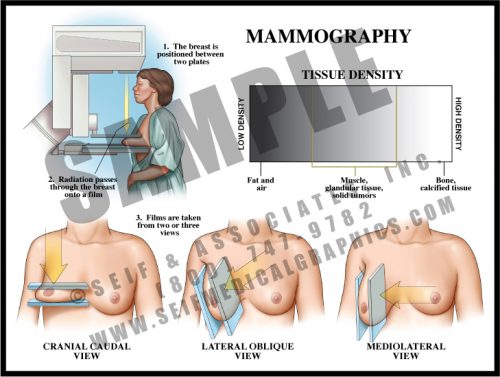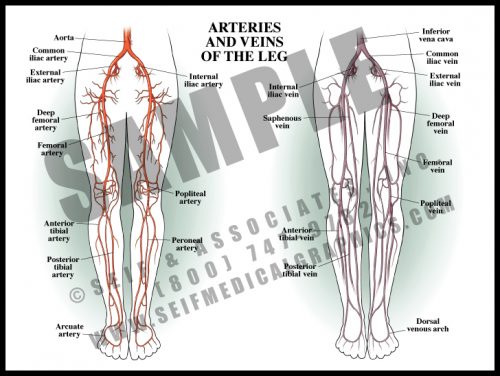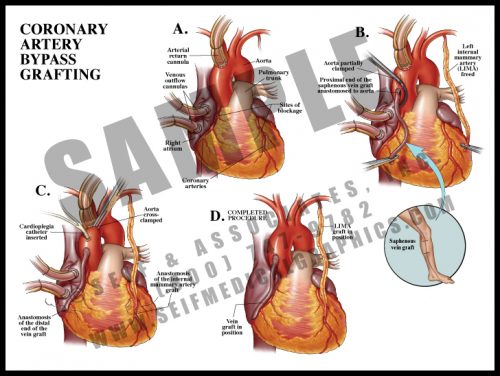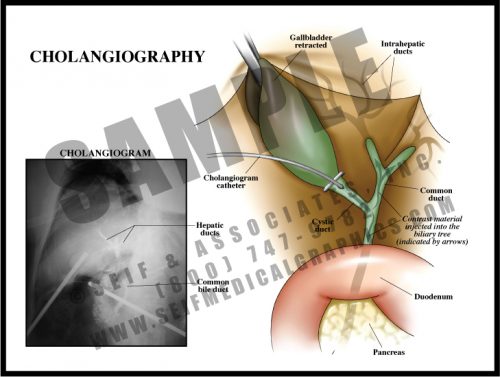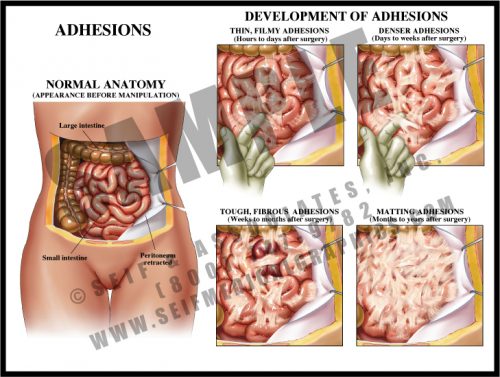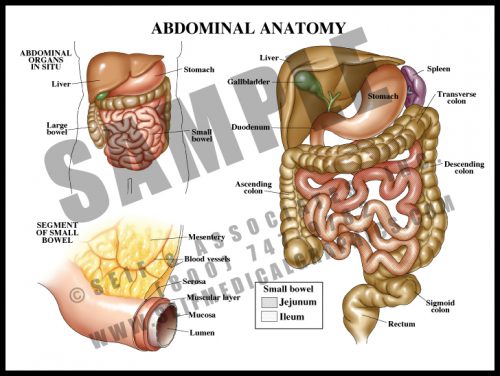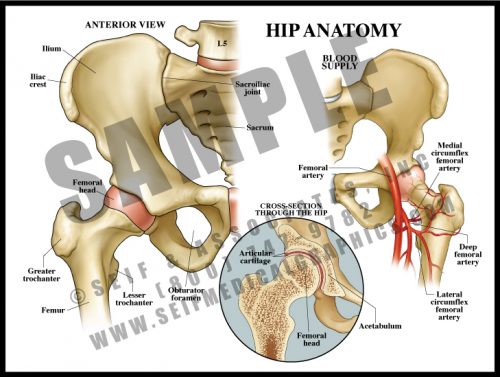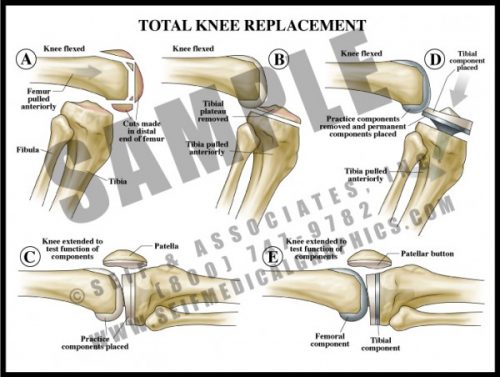- Mammography is an imaging technique which allows visualization of breast tissue. Fat, glandular tissue and ductal tissue have characteristic densities and patterns.
- Solid tumors are generally easier to see in older patients with larger amounts of fat within the breasts, but can be difficult to see in patients with “dense” breasts (young women and women with fibrocystic breasts).
- Approximately 75% of breast cancers can be seen on mammography, with the patient’s breast characteristics being the largest determining factor.
-
-
- Like in the arm, the deep, muscular arteries of the leg travel together, but the superficial veins are unpaired and variable in course.
- The legs receive blood from the terminal branches of the aorta, the iliac arteries. Branches supply the muscles of the thigh, and the name of the artery changes as it passes certain landmarks.
- The major vessels trifurcate behind the knee, dividing into the anterior and posterior tibial arteries and the peroneal artery, all of which travel toward the feet supplying the muscles and other tissues along the way.
- As in the arm, there are connective vascular arches in the foot supplying collateral circulation.
-
- When coronary arteries are significantly blocked (>70% stenosis), pain symptoms often occur with exercise in the form of stable angina, or at rest in the form of unstable angina.
- Bypass vessels are harvested as free grafts from the saphenous veins of the legs. These are anastomosed to the aorta and then to the coronary arteries, literally bypassing the blocked regions.
- The internal mammary arteries, which lie on either side of the sternum within the rib cage, can also be harvested and anastomosed directly to the coronary arteries. These grafts are less likely to stenose than are vein grafts.
- The procedure can be performed either on or off cardiopulmonary bypass.
-
- Performed during surgery for gallbladder removal, this is an effective intraoperative radiographic test to look for either blockage or leakage in the biliary tree.
- This test may be performed prior to removing the gallbladder, or at any time a problem is suspected. A tiny catheter is threaded through a small incision in the cystic duct. Dye is injected into the biliary tract and x-rays are taken, allowing the surgeon to see which ducts are patent. Voids represent stones or tumors, and extravasation represents a leak in the system.
- While this test is very reliable in the case of a retained stone or suspected damage, the outcome in patients having routine intraoperative cholangiography without apparent complication is the same as those in whom the test was not performed.
-
- Adhesions are fibrous scars which can form after any disturbance within body cavities and spaces. Inciting events can include surgery, trauma, and inflammation.
- Within hours of disturbance, thin, filmy strands form between bowel loops and between bowel and peritoneum and/or body wall. These continue to form for a period of time and mature over a period of weeks.
- Mature adhesions are dense, white fibrous tissues which have merged with the outer layer of the tissues; they eventually develop their own blood supply and may become severe enough to cause chronic pain and pose a chronic risk of small bowel obstruction or volvulus.
-
- The contents of the abdomen are primarily associated with digestion and distribution of nutrients.
- The esophagus, a tube which carries food and fluid through the thorax, enters the abdomen through the diaphragm, where it widens into the stomach; the stomach empties into the small bowel (duodenum, jejunum, and ileum, in which food is absorbed into the blood stream), and from there into the large bowel, where waste material is compacted as fluid is reabsorbed into the system.
- The liver has multiple functions affecting a number of other body systems, including digestive, hematologic and endocrine/metabolic.
- The large and small bowels are supplied by branches off of the aorta carried within the mesentery, a double-layered sheetlike structure.
-
- The largest joint in the body, the hip is composed of the large, round head of the femur which lies within the acetabulum or cup of the pelvis. Cartilage covers the articular surfaces, as in every other joint. There is a joint capsule and a number of muscles which cross and protect the joint and allow movement in a number of planes.
- The blood supply to the hip is relatively meager and easily disrupted with trauma.
- Since the entire weight of the body goes through this joint with every step, it is vulnerable to damage from use and is a common site for degenerative joint disease.
-
- One of the more common surgical procedures, diseased bone and articular surfaces (usually from either trauma and/or degenerative joint disease) are surgically removed.
- Most knee prostheses are made of a strong metal with a durable plastic overlay to serve as a joint surface.
- As with any bony prosthesis, these can be either cemented into place or have a roughened surface which allows bone to grow into the surface.
- All three units (femoral, tibial and patellar) can be inserted together or individually, depending upon the specific needs of the patient.
